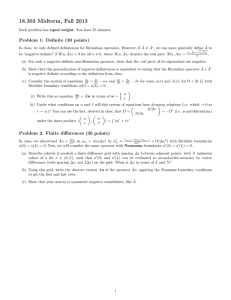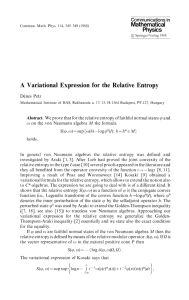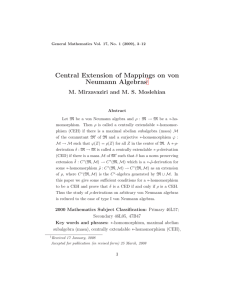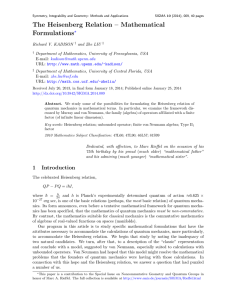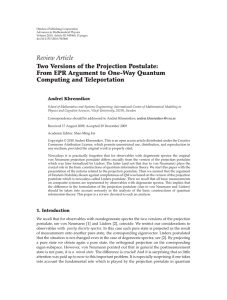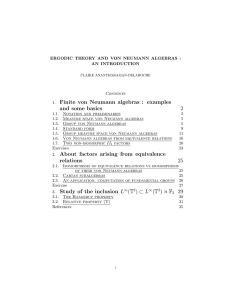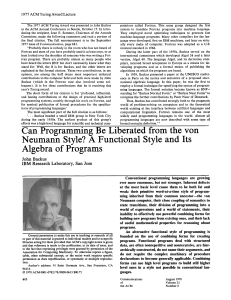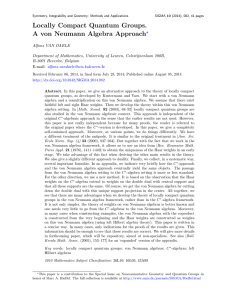NOTES FROM THE OPERATOR ALGEBRAS AND CFT WORKSHOP
advertisement
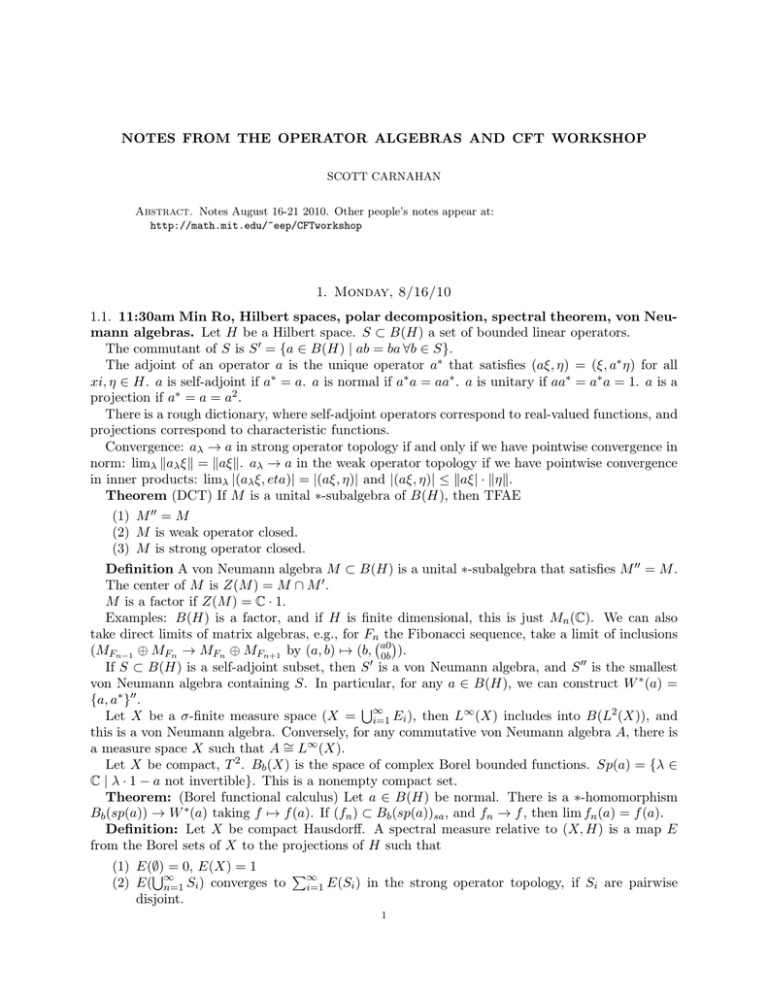
NOTES FROM THE OPERATOR ALGEBRAS AND CFT WORKSHOP
SCOTT CARNAHAN
Abstract. Notes August 16-21 2010. Other people’s notes appear at:
http://math.mit.edu/~eep/CFTworkshop
1. Monday, 8/16/10
1.1. 11:30am Min Ro, Hilbert spaces, polar decomposition, spectral theorem, von Neumann algebras. Let H be a Hilbert space. S ⊂ B(H) a set of bounded linear operators.
The commutant of S is S ′ = {a ∈ B(H) | ab = ba ∀b ∈ S}.
The adjoint of an operator a is the unique operator a∗ that satisfies (aξ, η) = (ξ, a∗ η) for all
xi, η ∈ H. a is self-adjoint if a∗ = a. a is normal if a∗ a = aa∗ . a is unitary if aa∗ = a∗ a = 1. a is a
projection if a∗ = a = a2 .
There is a rough dictionary, where self-adjoint operators correspond to real-valued functions, and
projections correspond to characteristic functions.
Convergence: aλ → a in strong operator topology if and only if we have pointwise convergence in
norm: limλ kaλ ξk = kaξk. aλ → a in the weak operator topology if we have pointwise convergence
in inner products: limλ |(aλ ξ, eta)| = |(aξ, η)| and |(aξ, η)| ≤ kaξ| · kηk.
Theorem (DCT) If M is a unital ∗-subalgebra of B(H), then TFAE
(1) M ′′ = M
(2) M is weak operator closed.
(3) M is strong operator closed.
Definition A von Neumann algebra M ⊂ B(H) is a unital ∗-subalgebra that satisfies M ′′ = M .
The center of M is Z(M ) = M ∩ M ′ .
M is a factor if Z(M ) = C · 1.
Examples: B(H) is a factor, and if H is finite dimensional, this is just Mn (C). We can also
take direct limits of matrix algebras, e.g., for Fn the
Fibonacci sequence, take a limit of inclusions
(MFn−1 ⊕ MFn → MFn ⊕ MFn+1 by (a, b) 7→ (b, a0
0b ).
If S ⊂ B(H) is a self-adjoint subset, then S ′ is a von Neumann algebra, and S ′′ is the smallest
von Neumann algebra containing S. In particular, for any a ∈ B(H), we can construct W ∗ (a) =
{a, a∗ }′′ .
S
∞
2
Let X be a σ-finite measure space (X = ∞
i=1 Ei ), then L (X) includes into B(L (X)), and
this is a von Neumann algebra. Conversely, for any commutative von Neumann algebra A, there is
a measure space X such that A ∼
= L∞ (X).
2
Let X be compact, T . Bb (X) is the space of complex Borel bounded functions. Sp(a) = {λ ∈
C | λ · 1 − a not invertible}. This is a nonempty compact set.
Theorem: (Borel functional calculus) Let a ∈ B(H) be normal. There is a ∗-homomorphism
Bb (sp(a)) → W ∗ (a) taking f 7→ f (a). If (fn ) ⊂ Bb (sp(a))sa , and fn → f , then lim fn (a) = f (a).
Definition: Let X be compact Hausdorff. A spectral measure relative to (X, H) is a map E
from the Borel sets of X to the projections of H such that
(1) E(∅)
S = 0, E(X) = 1
P∞
(2) E( ∞
n=1 Si ) converges to
i=1 E(Si ) in the strong operator topology, if Si are pairwise
disjoint.
1
2
SCOTT CARNAHAN
(3) E(S1 ∩ S2 ) = E(S1 )E(S2 ).
R
Definition: X f (λ)d(E, λ) can be defined.
Theorem: (Spectral theorem) LetR a ∈ B(H) be normal. There exists a unique spectral measure
relative to (sp(a), H) such that a = sp(a) λd(E, λ).
Theorem: (Polar decomposition) Let a ∈ B(H) with a∗ a positive (i.e., its spectrum is contained
in the nonnegative reals). Then there is a square root (a∗ a)1/2 . There is a unique u ∈ B(H) such
that u is a partial isometry (i.e., u∗ u and uu∗ are projections), a = u(a∗ a)1/2 , and ker(u) =
ker(a∗ a)1/2 .
If a is densely defined and closed (i.e., the graph is closed in H × H), then this also works. (NB:
there is also a notion of closable operator, whose graph is not closed, but has the property that the
closure of the graph is the graph of something else.)
Definition: Let S ⊂ B(H) be a self-adjoint subset. We consider two types of representation of
S. (K is some other Hilbert space.)
(1) π : S → U (K) a group.
(2) π : S → B(K) a ∗-homomorphism.
We can associate a von Neumann algebra by S ′ or S ′′ . We call either a factor representation if S ′ is
a factor. This is an analogue of a piece of an isotypical decomposition - canonical, not necessarily
irreducible.
If M = S ′ , then the projections in M correspond one-to-one to subrepresentations of (π, K).
Proposition: If (π, H) is a factor representation of S, and π1 , K1 ), (π2 , K2 ) are two subrepresentations, then
(1) there is a unique ∗-isomorphism Θ : π1 (S)′′ → π2 (S)′′ such that Θ(π1 (x)) = π2 (x) for all
x ∈ S.
(2) For X = HomS (K1 , K2 ), then XK1 = K2 .
(3) Θ(a)T = T a for all a ∈ π1 (S)′′ , T ∈ X.
(4) If X0 ⊂ X such that X0 K1 = K2 , then Θ(a) is the unique b ∈ π2 (S)′′ such that bT = T a
for all T ∈ X0 .
